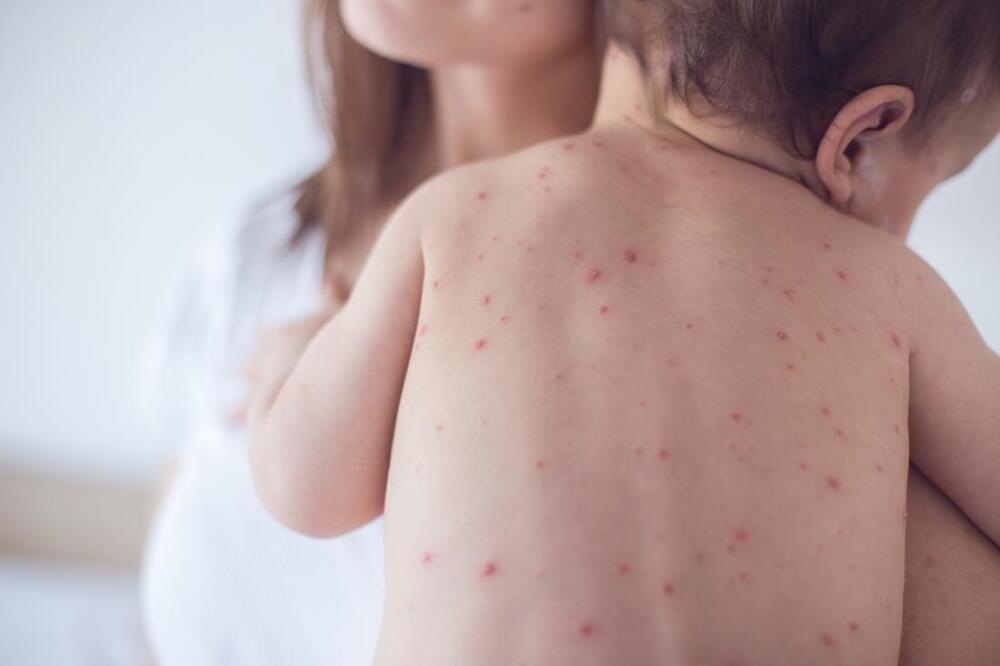Increased epidemiological surveillance of smallpox will be carried out until tomorrow, when the double maximum incubation period from the appearance of the first case of the disease in an eight-year-old girl expires.
This was announced to "Vijesta" from the Institute for Public Health (IJZ). Meanwhile, for almost three weeks, there have been no new, confirmed cases of measles.
"Strengthened epidemiological surveillance includes all contacts of the sick child. In accordance with the Guide for research and action in the event of an epidemic outbreak of measles, intensified epidemiological surveillance is carried out until the expiration of double the maximum incubation time (21 days) and it expires on Friday, April 19, 4," the IJZ replied.
They explained that, apart from two suspected cases that were tested and rejected due to negative PCR findings, there were no reports of new suspicions or cases of measles.
"Also, by looking into the integrated health information system, through which infectious diseases are reported, and direct contact with colleagues, it was not established that there were reports of suspected or measles cases in the territory of the municipality of Bar", the IJZ pointed out.
The first case of measles in Montenegro was registered on March 28, in an eight-year-old child who traveled to Sarajevo for a sports competition. The sick child was not vaccinated against measles.
IJZ previously told "Vijesta" that 74 people from Bar and Podgorica who traveled to Sarajevo for a karate competition, as well as 26 students from the ward of the sick child, are under surveillance. Family contacts, as well as the boy's teacher, are also under surveillance.
They also said that most of the 26 students in the class where the infected boy goes have received the MMR vaccine.
"According to the information from the epidemiological service of the Health Center, at least six contacts were not vaccinated, two contacts received one dose, while 18 were fully vaccinated," said the IJZ.
The Directorate for Inspection Affairs (UIP) responded to "Vijesta" that after the confirmation of measles virus infection in a child, the health and sanitary inspector in Bar is in constant contact with the Hygiene and Epidemiological Service (HES) of the Bar Health Center. They explained that the HES of the Bar Health Center conducts increased epidemiological surveillance on the territory of that municipality, with a special emphasis on people who were in contact with the sick boy during the infectious period.
According to IJZ data, the countries of the region are recording smallpox epidemics.
Almost 27.000 children in Montenegro did not receive the first dose of the MMR vaccine, and around 20.000 children did not receive the second dose. IJZ data also show that only a fifth of children born in 2022 received the measles vaccine.
In the territory of Bar, out of a total of 3.190 registered children born from January 1, 2017 to August 31, 2022, who are of an age suitable for vaccination with the first dose of the MMR vaccine, a little more than half, i.e. 1.629 of them, were vaccinated, which is lower than the national average, which is about 64 percent, the data are from March of this year.
Director of IJZ Dragan Laušević at the beginning of the month, he said that, after the first registered case of smallpox in Bar, a slight increase in vaccination of children was recorded in that municipality. He explained that during the first weekend after the outbreak of measles, a total of 72 doses of the vaccine were given.
Smallpox is among the most contagious diseases in existence and is spread through the air when an infected person coughs or sneezes.
They are most common in children under the age of five. Symptoms include fever, cough, runny nose and a characteristic rash. Most deaths are due to complications such as encephalitis, severe dehydration, serious breathing problems and pneumonia, and complications are most common in young children.
Bonus video:




